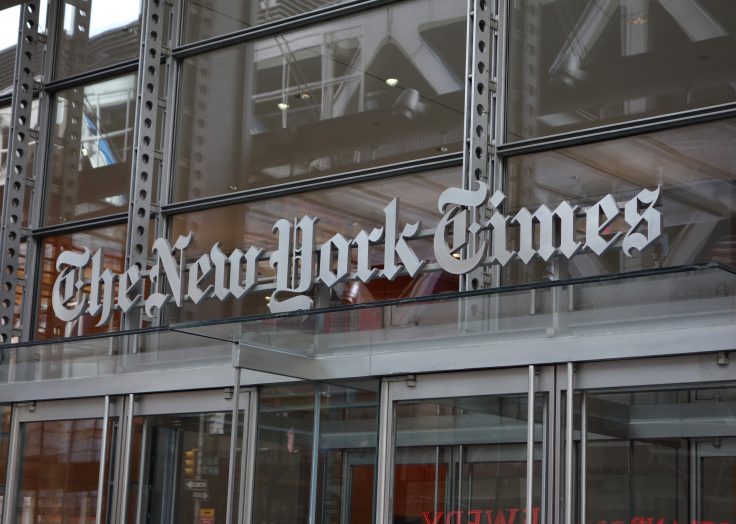The New York Times treats its white employees more favorably than its minority employees, according to a lengthy report from a labor union representing Times reporters and employees that argues the paper must grapple with systemic racism in its own ranks.
For years, according to the Times Guild's report released Tuesday, the Times has discriminated against employees of color. Zero black employees received the highest performance review rating in 2020, whereas white employees made up 90 percent of those with the top marks. Black employees are 10 percent of the union’s membership, but contribute to nearly 18 percent of the "partially meets expectations" ratings given out by management.
"Guild members who believed their contributions weren't fairly rated in the review process have said they feel demoralized and alienated—a pernicious outcome as the Times attempts to recruit and retain a diverse workforce," the report reads. "Management has denied the discrepancies in the performance ratings for nearly two years, time it could have instead spent trying to make the system better for everyone."
Those lower performance reviews translate into meager bonuses and lost promotions, according to the union. Multiple minority staffers who spoke with the guild for its report said they found the review process "confusing and frustrating." One former staffer, a minority, said he left the Times after receiving a poor performance review despite earning verbal praise from management.
The union’s report sheds light on the tensions left-wing media organizations face as their staff turns increasingly hostile to the management’s practices. The allegations are particularly notable given the Times's practice of printing stories alleging racist practices in virtually every corner of the country yet is seemingly unconcerned about engaging in the kind of discriminatory practices for which it criticizes others.
Outlets such as the Times depend on a younger, more outwardly left-wing workforce to maintain an edge over competitors. But that dynamic often sparks generational feuds, as younger employees grow bolder in their demands for higher pay, more editorial freedom, and stricter diversity criteria.
The Times did not respond to a request for comment.
A Times economics reporter, Ben Casselman, told management in June that he ran his own independent analysis and concluded that the company was engaged in discriminatory behavior. Casselman, according to the report, told management in a meeting that he was "begging" them to see the results.
"It’s deeply troubling to me, and I hope it’s deeply troubling to you," Casselman said in the meeting.
In its report, the Times union criticized the paper for hiring the law firm Seyfarth Shaw to analyze its diversity practices and find if there was any evidence of discrimination. Seyfarth Shaw, the report noted, has received negative attention over representing the Weinstein Company after it faced allegations of sexual misconduct.
Seyfarth Shaw’s analysis, which found that there was no evidence of a "systemic [racism] problem" was flawed, according to statisticians and academics who spoke with the guild. Some of those experts alleged the Times engaged in an effort to "avoid detecting any evidence of bias."
One statistician said the Times methodology was "so dumb" and "so stupid as to border on negligence."
Richard Tonowski, former chief psychologist at the Equal Employment Opportunity Commission, a federal agency dedicated to enforcing civil rights law in workplaces, agreed with the union’s conclusion that the Times's method of measuring workplace performance is flawed.
"It is not clear whether the racial imbalance is a result of problems in the performance review system itself or whether that system is simply revealing barriers to success for employees of color at the company," the commission report reads.
The independent analysis by the Times union found that black employees were 47.2 percent less likely than a white employee to receive a high rating in 2021. The bias was even greater against Hispanics, who were 61.2 percent less likely to receive a high rating.
According to the union, the Times denies any evidence of problematic racial discrepancies. In one meeting, the Times's senior vice president for talent management said black and Hispanic employees are actually overrepresented in the "'meets all expectations' rating."
"If our recently hired Black and brown colleagues are disproportionately receiving low performance ratings, that suggests that the Times is not doing an effective job making our workplace a welcoming and nurturing environment for all employees—something we have heard anecdotally from many current and former colleagues, some of whom left the company for this exact reason," the report reads.
